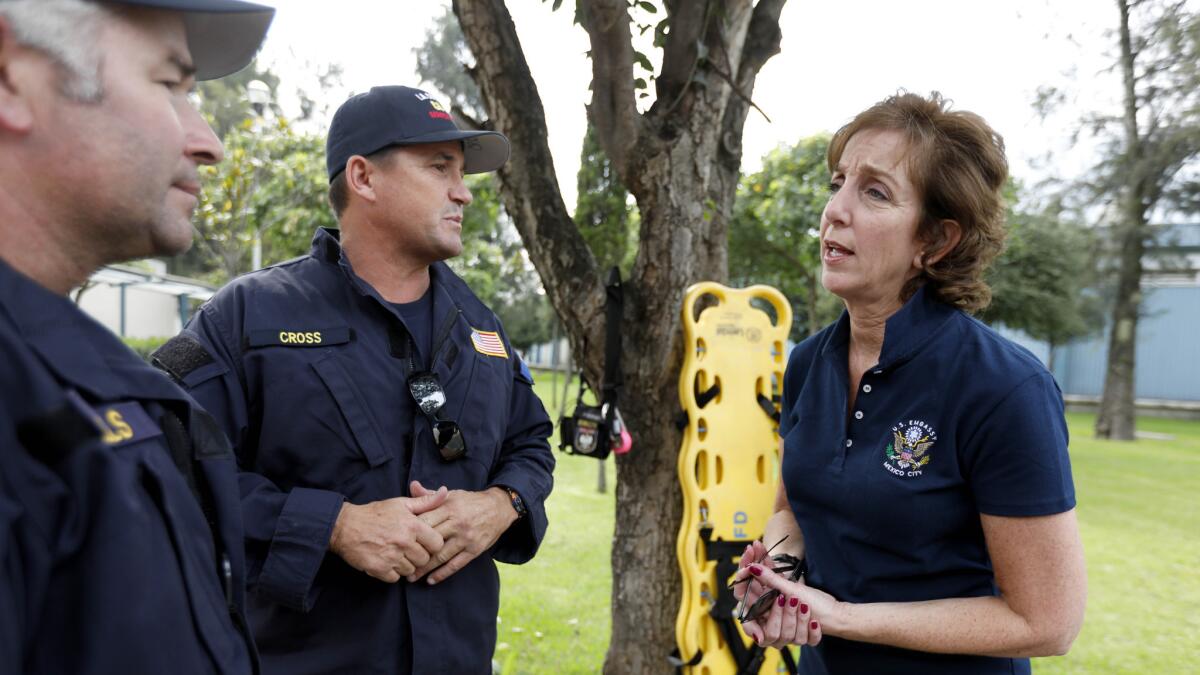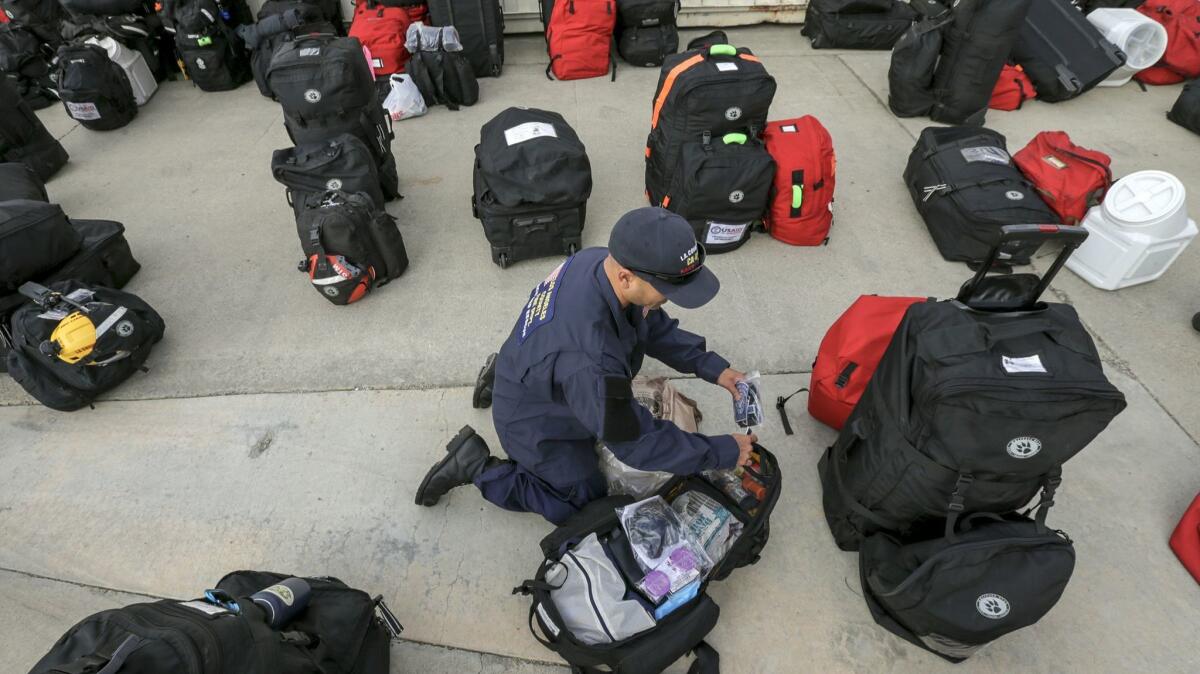Despite tense relations, U.S. and Mexico come together for earthquake recovery

Here are eight organizations providing services and accepting donations. (Sept. 21, 2017)
- Share via
Reporting from Mexico City — It’s been a tough year for U.S.-Mexico relations.
The countries are locked in tense talks to renegotiate the North American Free Trade Deal, and Mexican public opinion of the U.S. has plummeted as President Trump has repeatedly criticized Mexico and vowed to make it pay for construction of a border wall.
But those tensions were absent this week as dozens of U.S. rescuers combed parts of Mexico City that were leveled by Tuesday’s deadly earthquake. The disaster response team, made up largely of firefighters from Southern California, has swarmed the sites of several collapsed buildings, using dogs and search cameras to hunt for signs of life.
Trump ordered the deployment of U.S. aid after he spoke to Mexican President Enrique Peña Nieto by phone Wednesday, a day after the violent magnitude 7.1 temblor shook central Mexico. The earthquake brought down dozens of multistory buildings and killed at least 286 people across five states and the country’s densely packed capital.
Trump had drawn criticism earlier in the month after he waited a week to call Peña Nieto to offer condolences after Mexico was hit by another devastating earthquake, this one off its southern coast, which killed at least 98 people.
This time, the U.S. Agency for International Development sent its Disaster Assistance Response Team within hours of the earthquake, along with dozens of firefighters from the Los Angeles County Fire Department’s Urban Search and Rescue team. The rescuers arrived with 65,000 pounds of equipment, according to U.S. Ambassador to Mexico Roberta Jacobson.

Jacobson met with the aid team Thursday at their base of operations at a sports complex near Mexico City’s airport. Firefighters rushed around, loading equipment onto large trucks to be taken to disaster sites.
No matter the politics of any given moment, “when something like this happens, we come together,” Jacobson said. “When we see tragedies in the U.S. or Mexico, the best of our people and both of our countries arises.”
With the chance of finding survivors still trapped under the rubble growing less likely every hour, the team has focused most of its efforts for now on identifying rescue sites where there still may be people buried alive. The team brought advanced listening equipment that can detect the faintest tapping sounds as well as long, flexible search cameras that allow rescuers to peer into deep crevices.
Dennis Cross, task force leader of the search and rescue team, said they had gotten a “hit” — evidence of survivors — at at least two locations.
The team brought heavy equipment and chainsaws that can breach and break cinder block and cut through rebar and concrete, he said.
Later, the team will conduct damage assessments of structures affected by the quake. Hundreds of buildings in Mexico City’s center were damaged, according to authorities, and many were partially crumbling or had deep cracks in their walls. Several collapsed hours after the quake, trapping people inside. Some residents, fearing that aftershocks could topple more buildings, chose to sleep in the streets rather than in their homes.
In the past, the L.A. County team has responded to disasters around the world, including to earthquakes in Haiti, Japan and Nepal.
“We go anywhere,” Cross said. Politics never enter into the equation, he said.

The team from California, with several Mexican American members, has a special connection to Mexico, he said.
“Mexico is a great neighbor,” he said. “We have a unique connection.”
Twitter: @katelinthicum
More to Read
Sign up for Essential California
The most important California stories and recommendations in your inbox every morning.
You may occasionally receive promotional content from the Los Angeles Times.











